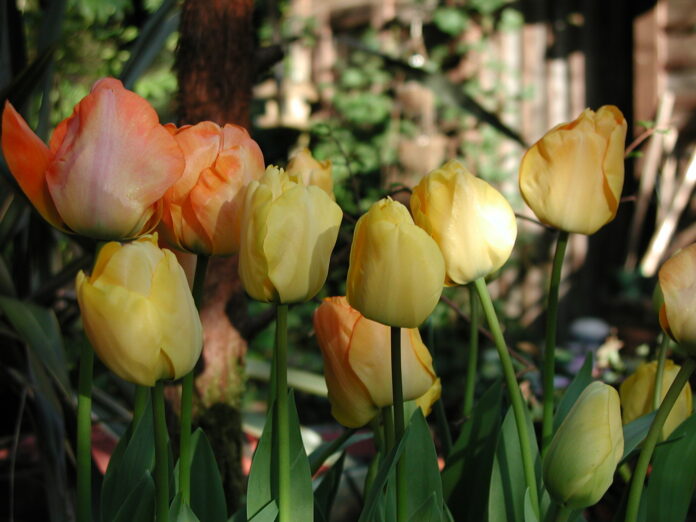Many of us garden in the shade year round. Others have sun in the summer but shade from fall through spring as the sun’s arc becomes lower. Do you look at the fall bulbs for sale and think ‘Is there any hope that my garden might look like the pictures on the package come spring?” Here are some encouraging tips for you if this describes your garden.
If you dream about drifts of colorful flowers under your trees in the spring but didn’t think they would bloom in the shade, think again. Even if your entire garden is shady year round there is hope.
Some bulbs manage to grow just fine beneath trees-even evergreen trees. Many from the daffodil clan, including jonquils and narcissus will grow, bloom and naturalize year after year under tree canopies or other lightly shaded areas. Common ones to try are Golden Harvest, the classic, large yellow King Alfred daffodil and Dutch Master with pure gold flowers. Barret Browning has a soft. butter-yellow corolla and a pumpkin orange frilly tube.
Other common bulbs that will bloom in light shade are crocus, scilla, tulips, grape hyacinth, leucojum, snowdrops, chionodoxa and lily of the valley.
To make sure your bulbs stand out in the landscape, figure at least 20-40 bulbs per drift. If your ground is hard or impacted by roots, be sure to pick up a sturdy, foot-operated bulb planter to make is easier to dig. Naturalizing daffodils is an affordable way to grow more flowers and they’ll come back every year without losses from deer and gophers.
Squirrels, mice and moles, however, are observant and crafty. Once they discover newly planted bulbs, they’ll assume it’s food. Just disturbing the earth is a tip off for them. Daffodils and narcissus bulbs are unappetizing but if they dig them up and leave them exposed with just a nibble taken from them, so much for any spring flower display. Protect your bulbs with wire baskets or spray them with foul tasting repellent, letting the spray dry before planting. You can also bury the bulbs with ground up egg shells.
Planting bulbs alongside a path makes for a beautiful look come spring. If you installed a flagstone or stepping stone path or sitting area this fall, now is the best time to plant groundcovers between. Low, sturdy types that can withstand some foot traffic include blue star creeper for regularly irrigated area and creeping, woolly or elfin thyme for drier spaces. Make sure you have enough planting mix between the pavers for the plugs to grow. Fill the largest spaces first and allow them to spread into the little cracks. Mixing groundcover types looks great as long as they have the same water requirements. Low growing pennyroyal and corsican mint smell wonderful when you walk on them as does chamomile, although you need to mow this one occasionally to keep it neat and tidy.
Whatever you bulbs you choose to try this fall, you will be happy you planted some bulbs come spring. And to help them bloom again the following year fertilize them at the time of planting with bulb food or bone meal worked into the soil a couple inches at the bottom of the hole. Mature bulbs respond to an early spring feeding with the same fertilizer.











